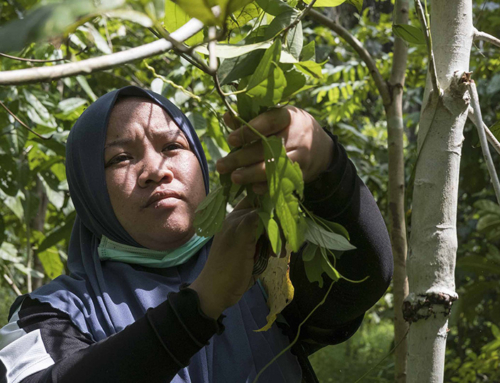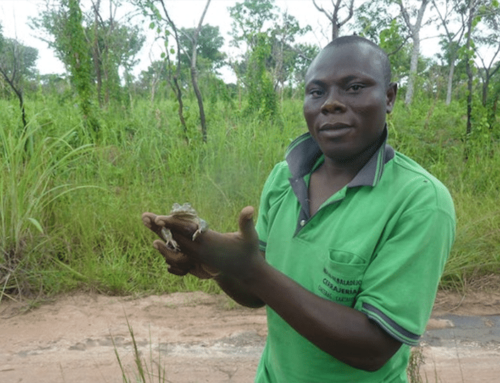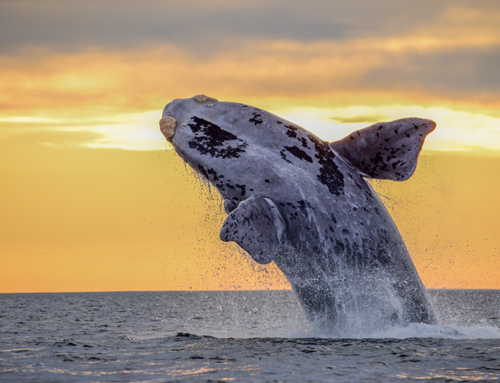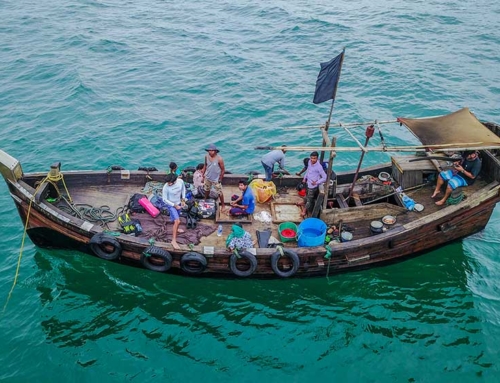Wildlife corridors through oil palm plantations. Local communities saving the world’s rarest crocodile from extinction. Sweeping new protections for EU seabed. A groundbreaking coalition for amphibian conservation. When conservation organisations have access to flexible, reliable funding, their impact can be revolutionary.
In this series, we look back at major victories facilitated by our long-term, trust-based funding strategy. Beyond the value of multi-year support, these stories prove that local communities and grassroots organisations have the power to resist destructive industry, protect threatened ecosystems, build their own visions for sustainable development, and restore the living world for the next generation.
Forcing government action against the single greatest threat to our seabed
A heavy net drags across the seafloor, indiscriminately collecting a vast harvest of ocean life, leaving a trail of destroyed ecosystems in its wake. This highly destructive form of industrial fishing is known as bottom trawling, and it accounts for about a quarter of wild caught seafood. It is also the single greatest cause of human-driven disturbance of the world’s seabed ecosystems, according to a 2021 report by leading fisheries experts.
Along with shrimp, prawns, and bottom-dwelling fish like flounder and cod, the nets harvest thousands of other species living on the sea floor. Deemed ‘worthless’ by fishing companies, these vital members of the ocean ecosystem are unceremoniously dumped overboard. In the past 65 years, at least 437 million tonnes of fish and invertebrates have met this fate.
At the same time, trawling releases huge amounts of CO2, much like burning a rainforest or ploughing a peat bog. A recent study found that the practice may account for as much greenhouse gas emissions as the entire aviation industry.
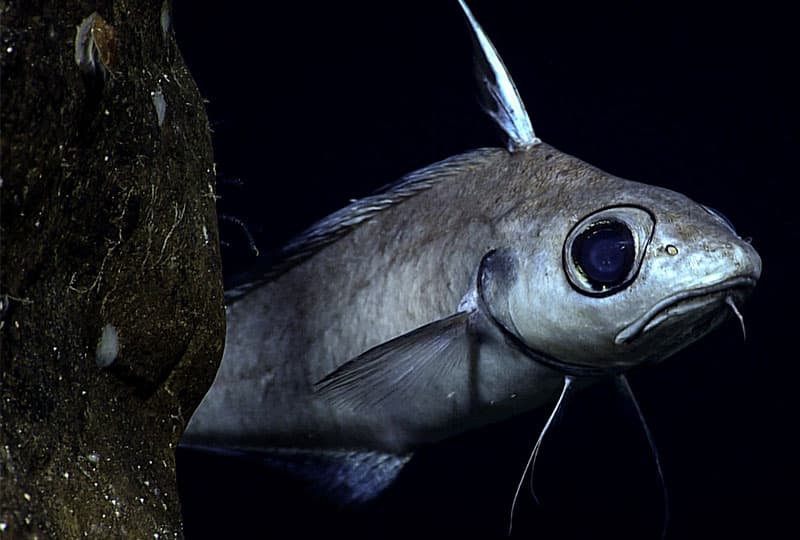
Many deep-sea species, like the roundnose grenadier and orange roughy, grow and reproduce very slowly, making them especially vulnerable to bottom trawlers. Image: NOAA Public Domain
Policy-level action for the ocean
Surprisingly, this immensely wasteful and destructive practice likely would not be profitable were it not for government subsidies. Action against bottom trawling thus hinges on shifting national and international policy.
In 2013, Synchronicity Earth made our first grant towards a joint piece of work by the Deep Sea Conservation Coalition (DSCC) and BLOOM Association (BLOOM). The two organisations were campaigning for new legislation banning deep-sea trawling in the European Union.
Deep seabeds – areas of the sea floor below around 200 metres in depth, where light begins to fade – are the most vulnerable to bottom trawling. Because light and nutrients are scarce, flora and fauna are adapted to very slow rates of growth and development.
And while ecosystems on land or in the shallows have some experience of natural disasters, those of the deep sea have historically been insulated from major disruption. The destruction wrought by bottom trawling is thus a completely unfamiliar threat, and recovery will take centuries – if it happens at all.
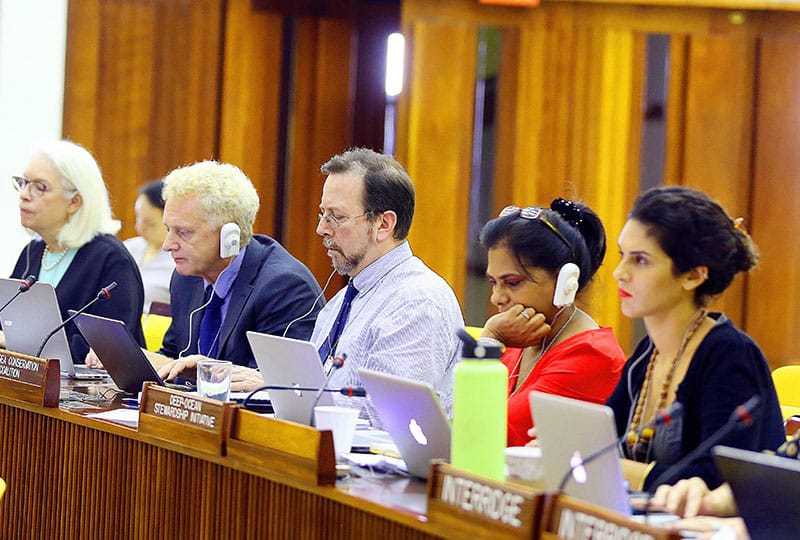
Attendees discuss policy measures at an International Seabed Authority (ISA) council meeting. © DSCC
The 2016 ban on deep-sea trawling in the EU
Synchronicity Earth has now supported DSCC and BLOOM’s advocacy against bottom trawling for over a decade. They achieved their first major success in 2016, when the EU banned deep-sea trawling in all European waters more than 800 metres in depth, as well as all “vulnerable marine ecosystems” below 400 metres.
Legislative victories can seem conclusive, but the real battle often takes place in the years that follow. Without strong implementation, good laws can remain little more than empty words. In this case, identifying and protecting vulnerable areas of seafloor between 400 and 800 metres in depth quickly became problematic. The fishing industry, along with some governments, worked hard to delay the inherently complex and difficult process.
16,000 km2 under explicit protection
For years, policy experts at DSCC attended meeting after meeting, persistently advocating for the most ambitious and precautionary approach to identifying and closing these marine areas. In September 2022, the EU finally listened, protecting 16,000 km2 of vulnerable deep-sea areas (three quarters the size of Wales). Accounting for a little more than 1% of EU waters of the North-East Atlantic, these sites are home to especially biodiverse and vulnerable ecosystems, including cold water corals and deep-sea sponges.
Many funders step away once policy achievements have been reached, making it challenging for organisations like DSCC to lobby for strong implementation. By prioritising long-term, trust-based funding, Synchronicity Earth can give our partners the time and space to achieve crucial victories. As we continue supporting policy work against excessive and destructive fishing, along with new extractive industries like deep-sea mining, we anticipate many similarly protracted battles – and more hard-won victories for the future of all life on Earth.


